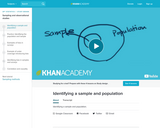
Short video which describes the difference between a sample and a population.
- Subject:
- Mathematics
- Statistics and Probability
- Material Type:
- Lesson
- Provider:
- Khan Academy
- Author:
- Salman Khan
- Date Added:
- 02/28/2018

Short video which describes the difference between a sample and a population.
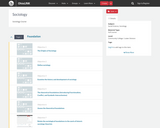
The Introduction to Sociology Course was developed through the Ohio Department of Higher Education OER Innovation Grant. This work was completed and the course was posted in September 2018. The course is part of the Ohio Transfer Module and is also named OSS021. For more information about credit transfer between Ohio colleges and universities, please visit: www.ohiohighered.org/transfer.Team LeadIrene Petten Columbus State Community CollegeContent Contributors Dee Malcuit Clark State Community CollegeKwaku Oboso-Mensah Lorain County Community CollegeAnjel Stough-Hunter Ohio Dominican UniversityLibrarianSherri Saines Ohio UniversityReview TeamEric Jorrey Central Ohio Technical College

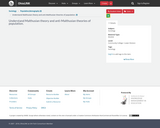
OER Text materialPopulation Growth and DeclineSociology: Understanding and Changing the Social World, 19.2.1. This section introduces Mathusian ideas on population growth and the means to sustain that population (i.e. food production). It also provides evidence that the growth Malthus anticipated has not been realized and critiques those who have adopted Malthusian theories as veiled forms of racism in the 1970s. The only alternative theory to Malthusian theory provided is demographic transition theory, which links population growth to technological development. Additionally, this section discusses the declines in birthrates, and policies that encourage women to have more children.
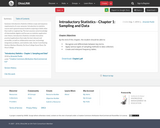
Summary
Introductory Statistics follows scope and sequence requirements of a one-semester introduction to statistics course and is geared toward students majoring in fields other than math or engineering. The text assumes some knowledge of intermediate algebra and focuses on statistics application over theory. Introductory Statistics includes innovative practical applications that make the text relevant and accessible, as well as collaborative exercises, technology integration problems, and statistics labs.
Senior Contributing Authors
Barbara Illowsky, De Anza College
Susan Dean, De Anza College



By the end of this section, you will be able to do the following:
Identify and describe the properties of life
Describe the levels of organization among living things
Recognize and interpret a phylogenetic tree
List examples of different subdisciplines in biology
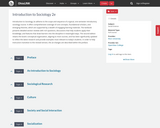
Introduction to Sociology 2e adheres to the scope and sequence of a typical, one-semester introductory sociology course. It offers comprehensive coverage of core concepts, foundational scholars, and emerging theories, which are supported by a wealth of engaging learning materials. The textbook presents detailed section reviews with rich questions, discussions that help students apply their knowledge, and features that draw learners into the discipline in meaningful ways. The second edition retains the book’s conceptual organization, aligning to most courses, and has been significantly updated to reflect the latest research and provide examples most relevant to today’s students. In order to help instructors transition to the revised version, the 2e changes are described within the preface.

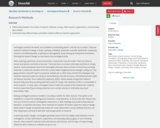
Differentiate between four kinds of research methods: surveys, field research, experiments, and secondary data analysis
Understand why different topics are better suited to different research approaches


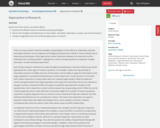
By the end of this section, you will be able to:
Describe the different research methods used by psychologists
Discuss the strengths and weaknesses of case studies, naturalistic observation, surveys, and archival research
Compare longitudinal and cross-sectional approaches to research
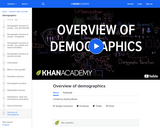
Looks at rural and urban demographics in relation from conflict, symbolic interactionist and functionalist perspectives.

LEARNING OBJECTIVE: Identify and distinguish between a parameter and a statistic.
LEARNING OBJECTIVE: Explain the concepts of sampling variability and sampling distribution.